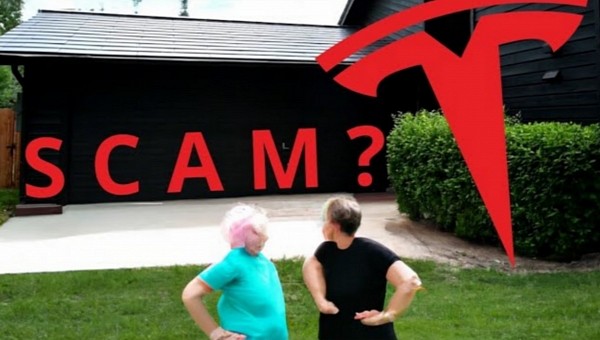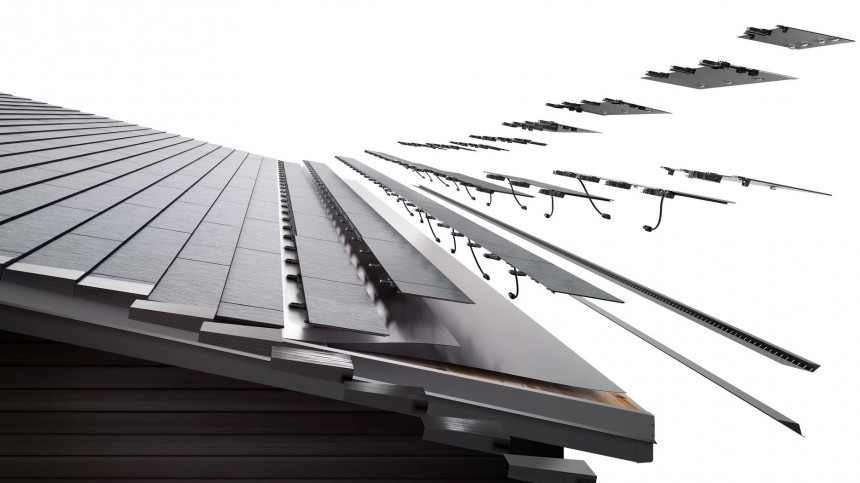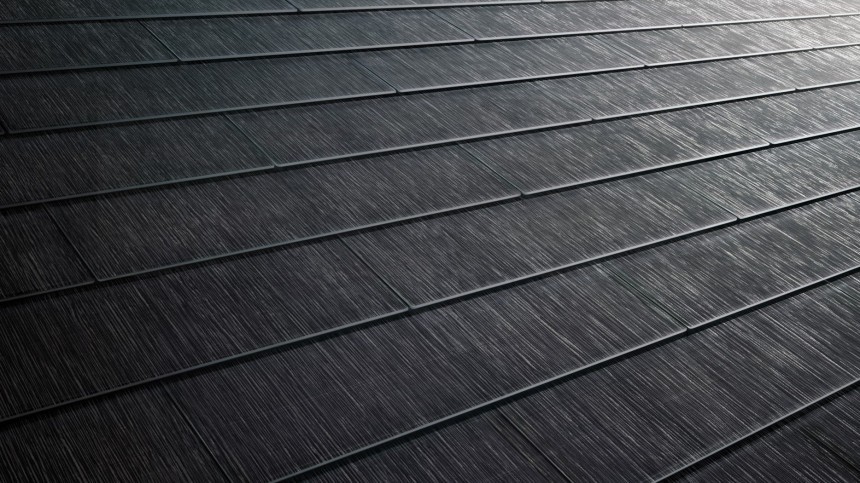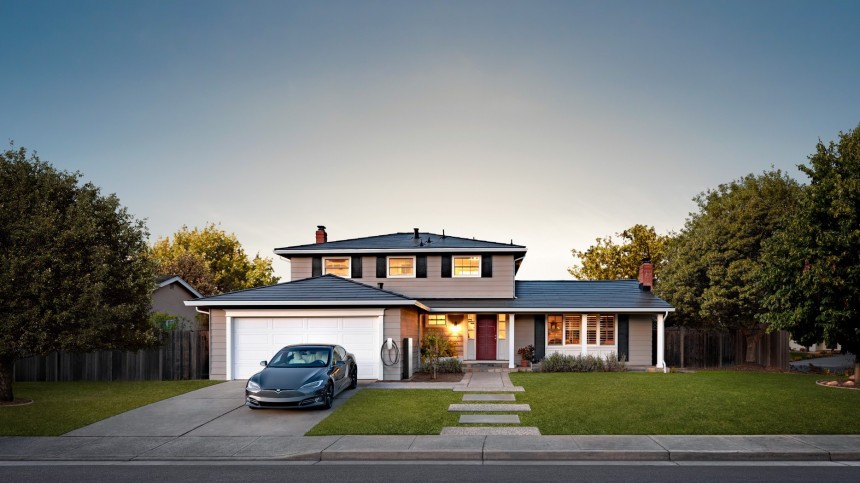Over the years, we have collected stories of people who decided to buy Tesla Solar or the Tesla Roof. They often complain that the installation presents problems, water leaks, or that the company simply vanishes when they need assistance. This Tesla Roof customer seems to be an exception: he’s pretty happy both with the service and the results.
The brand-new YouTube channel Short Version 1.0 started precisely with this one-year review of the Tesla Roof. Despite the channel's name, the video is not exactly concise, but that ends up being one of its qualities because we can learn all details about the installation, from ordering it to the start of operation and beyond.
According to the presenter, it all began when his insurance company told him he would have to replace his house’s asphalt roof. To do so, he would receive $12,000 from the company, which led him to check how much the Tesla Roof would cost him.
With three Powerwalls for a total of 40 kWh of storage and a production capacity of 10.99 kW, it would cost less than $30,000 with all the local incentives and the 26% federal tax credit. That was at the beginning of the pandemic.
The problem was that the presenter had to wait more than one year for authorization to install the new roof. Blame that on his utility company and the building department. Tesla raised its prices along the way, and the presenter did not escape the hike. Despite that, he decided to install the Tesla Roof anyway. That was pretty much the only issue he faced with his solar solution. Here, the presenter tried to defend Tesla more than he should have.
In his opinion, the complaints about not getting Tesla Solar or that they had their orders canceled are due to the jurisdiction and other external problems than with Tesla’s installation capabilities. There’s no way to be sure about that, especially if Tesla did not tell complaining customers that this was the case.
Another complaint the presenter had was how much public attention the Tesla Roof raised. When the boxes were placed in front of his house, people would take pictures and ask him questions about the system. Introverts should take notes, in his opinion.
The presenter was lucky that the Tesla team involved with his installation was really careful about safety and willing to discuss all installation steps. The process starts with an adhesive underlayment that seals the roof.
Tesla then uses plastic clips screwed through the underlayment. These clips are where ceramic tiles with solar cells are installed. Some of these shingles do not have any function other than protecting the roof.
Tesla had two teams acting: one for the roof and one for the Powerwalls. The latter is the one that shows how the Tesla app works with the Tesla Roof. They took more time to show up because they needed Permission to Operate (PTO), which came only in late summer – probably in 2021 because this is a review after one year of use, but the video does not make it clear.
The presenter exposes something that may sound obvious but that is worth listening to for those planning to get any sort of solar generation device: all you can control is your energy consumption, not how much energy these systems will provide you.
That said, he describes how much energy he used to need from gas and electricity, how he bought heat pumps to replace the gas systems (which increased his electricity bill), and how much less energy the Tesla Roof generates when the energy needs are higher. From 1,000 kWh (probably per month) in the summer, the solar tiles deliver only 400 kWh in the winter. That makes his house able to go off-grid only from March until October.
The more interesting numbers were saved for the end of the video. Before switching to a heat pump, the presenter used to spend an average of $62 monthly on electricity. When the heat pump arrived, he started spending an average of $147. When the Tesla Roof and the Powerwalls began to work, the energy cost dropped to an average of $8.50. He expects that value to drop to around $5 per month on average. Solar production covered 85% of his house’s electricity demands.
If the average monthly cost of electricity really drops to $5, the presenter expects that he will save $1,700 on electricity per year. The total cost of the Tesla Roof, three Powerwalls, two inverters, and installation was $32,500. At that much, it would take him 19 years to recover the investment, but he made some calculations that seemed fair.
According to the presenter, a new asphalt roof would demand around $16,000 to $17,000. In other words, that’s an expense he would have anyway. That said, the true cost of the Tesla Roof and all accessories was $16,500 if you consider the cheapest asphalt roof. By saving $1,700 per year, it would take him ten years to recover the investment.
The presenter seems pretty confident that the batteries on the Powerwall will last that much and that the ceramic tiles are also very resistant. Regular solar panels usually last 20 to 30 years, but battery packs with ternary cells are expected to last around ten. In the end, the ten-year review will be the most interesting one to follow for those with enough patience to wait for it.
According to the presenter, it all began when his insurance company told him he would have to replace his house’s asphalt roof. To do so, he would receive $12,000 from the company, which led him to check how much the Tesla Roof would cost him.
With three Powerwalls for a total of 40 kWh of storage and a production capacity of 10.99 kW, it would cost less than $30,000 with all the local incentives and the 26% federal tax credit. That was at the beginning of the pandemic.
The problem was that the presenter had to wait more than one year for authorization to install the new roof. Blame that on his utility company and the building department. Tesla raised its prices along the way, and the presenter did not escape the hike. Despite that, he decided to install the Tesla Roof anyway. That was pretty much the only issue he faced with his solar solution. Here, the presenter tried to defend Tesla more than he should have.
Another complaint the presenter had was how much public attention the Tesla Roof raised. When the boxes were placed in front of his house, people would take pictures and ask him questions about the system. Introverts should take notes, in his opinion.
The presenter was lucky that the Tesla team involved with his installation was really careful about safety and willing to discuss all installation steps. The process starts with an adhesive underlayment that seals the roof.
Tesla then uses plastic clips screwed through the underlayment. These clips are where ceramic tiles with solar cells are installed. Some of these shingles do not have any function other than protecting the roof.
The presenter exposes something that may sound obvious but that is worth listening to for those planning to get any sort of solar generation device: all you can control is your energy consumption, not how much energy these systems will provide you.
That said, he describes how much energy he used to need from gas and electricity, how he bought heat pumps to replace the gas systems (which increased his electricity bill), and how much less energy the Tesla Roof generates when the energy needs are higher. From 1,000 kWh (probably per month) in the summer, the solar tiles deliver only 400 kWh in the winter. That makes his house able to go off-grid only from March until October.
If the average monthly cost of electricity really drops to $5, the presenter expects that he will save $1,700 on electricity per year. The total cost of the Tesla Roof, three Powerwalls, two inverters, and installation was $32,500. At that much, it would take him 19 years to recover the investment, but he made some calculations that seemed fair.
According to the presenter, a new asphalt roof would demand around $16,000 to $17,000. In other words, that’s an expense he would have anyway. That said, the true cost of the Tesla Roof and all accessories was $16,500 if you consider the cheapest asphalt roof. By saving $1,700 per year, it would take him ten years to recover the investment.
The presenter seems pretty confident that the batteries on the Powerwall will last that much and that the ceramic tiles are also very resistant. Regular solar panels usually last 20 to 30 years, but battery packs with ternary cells are expected to last around ten. In the end, the ten-year review will be the most interesting one to follow for those with enough patience to wait for it.





























